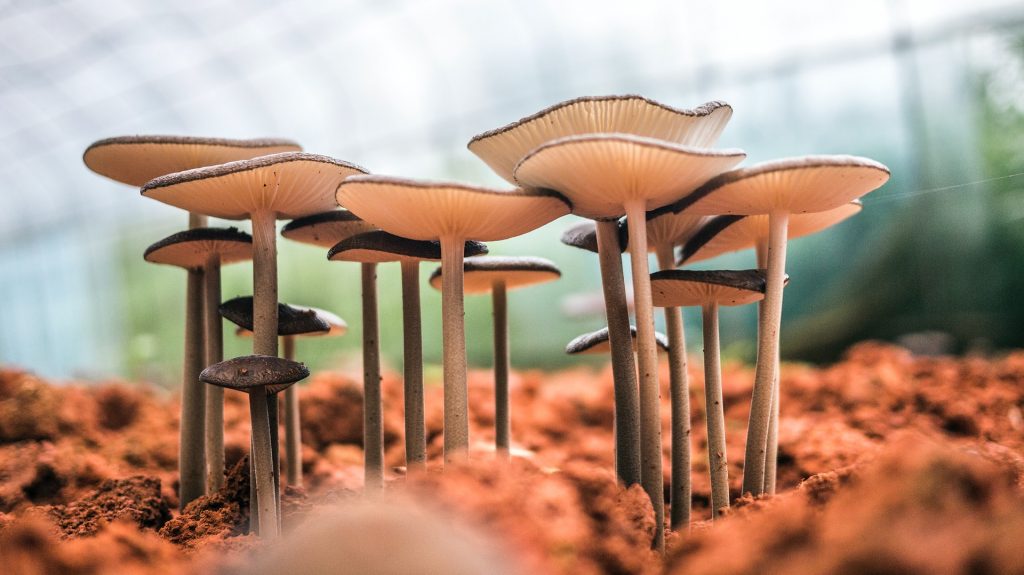 Although plastics, oil, and other pollutants are accumulating in landfills and soils everywhere, it seems the world’s ecosystems may have a solution. Certain fungi have been shown to break down plastics and toxic waste, and they could even be commercially viable.
Although plastics, oil, and other pollutants are accumulating in landfills and soils everywhere, it seems the world’s ecosystems may have a solution. Certain fungi have been shown to break down plastics and toxic waste, and they could even be commercially viable.
Fungi digest their food by sending out thin root-like filaments called mycorrhizal fibers, which act like an external stomach. As powerful enzymes secreted by the mycorrhizae come in contact with the fungus’ nutrient source, they break molecules into simpler building blocks the organism can use to grow. This process is how certain species of fungi can absorb toxic compounds, like plastic, and turn them into something beneficial for their ecosystem.
The practice of decontaminating an environment using fungi is known as “mycoremediation,” and conversations about it are on the rise. A 2019 article from leaps.org discussed several of the species being studied as possible plastic-decomposers. One of the species most commonly discussed as a contender for commercial plastic decomposition is Pestalotiopsis microspora, which studies have shown can break down plastics like polyester polyurethane very quickly, and in environments with no access to oxygen.
These qualities could potentially make the fungus a great contender for the role of commercial trash decomposer, as it can efficiently consume the plastics even from underneath a stifling pile of, well, trash. Other types of plastic-eating fungi show exciting and promising qualities as well, like edibility.
As demonstrated by a combination art, engineering, and mycology project known as the Fungi Mutarium, under the right conditions some plastic-eating fungi can not only eliminate plastic waste, but also restructure its molecules and create a source of nutrition for humans.
The Drawbacks
There are several potential drawbacks to these possibilities.
Firstly, just because a fungus is safe for human consumption after digesting perfectly sterile polyester polyurethane in a lab setting, doesn’t mean it would be necessarily safe for all kinds of consumption, or that it would be edible after digesting commercially discarded plastics.
Another possible concern is the scale required for commercial plastic breakdown. Although the growth of fungi in an environment is preferable — as opposed to the toxic runoff associated with large accumulated landfills, it is not yet fully understood what the effect of any given fungus would have on its surrounding environments if left to grow in landfills on a large scale.
Finally, logistically speaking, it is much harder to get a clear timeline for plastic decomposition with fungi than with, say, chemicals, mechanical means, or time. Every species of fungus could digest plastics at different rates, and the timeliness could vary widely based on temperature, climate, pH of the soil, and any other factor which affects living organisms.
Other Amazing Fungi
A similar dilemma mixed with exciting possibilities can be seen in the topic of soil detoxification by fungi. In early 2019, The Counter published an article about California’s use of Oyster mushrooms to clean toxic contaminants from soil after wildfires. While this is an exciting step in the direction of ecosystemic harmony, it is still not a perfect solution for large-scale commercial problems.
Because mushrooms take time to grow and digest waste, they’re not an instant fix like, for example, scraping toxic waste from topsoil. This is an issue in large-scale cleanups because, according to California mushroom cultivation professor Theresa Halula, federal regulations require that 100% of targeted contaminants must be removed from the soil within a short timeframe. “We don’t yet know the spread of the breakdown,” she said, “or how effective that breakdown is.”
Another concern is that unlike nonliving remedial solutions, any given species of fungus might only live in one environment or another. Because fungi, like other organisms, have certain environmental requirements for their survival, it’s hard to make an affordable catch-all pollution solution with fungi. There’s too much variability and not enough research from scientists to date.
As with many issues of innovative science, the answer seems to be: this could be something big, but we need more data. According to many biologists specializing in fungi, the number-one issue is lack of funding to complete studies.
As Chinese scientist Sehroon Khan put it when speaking with leaps.org, “We are developing these things for a large scale, but it needs a lot of funding to get to real applications [on] plastic waste.”
By Ardea C. Eichner
Do you have a story for The Advocate? Email editor@corvallisadvocate.com


